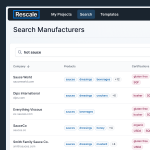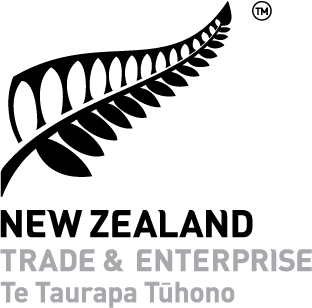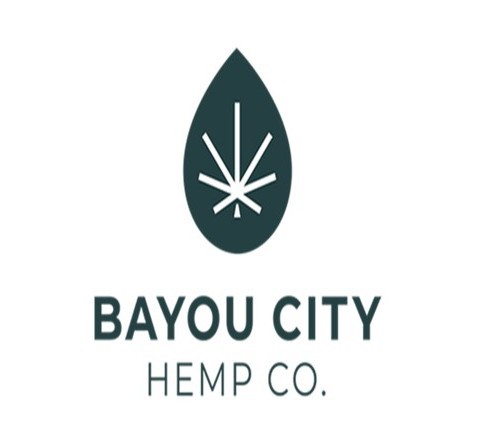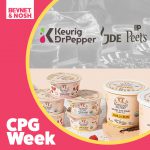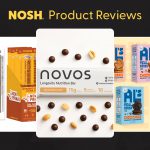Guest Column: What’s My Valuation? Pt. 2 – So… What Is My Valuation?
About the Author: Stu Strumwasser is the Founder and Managing Director of Green Circle Capital, a leading boutique investment bank focused on the natural products space. He spent the early part of his career at firms that included Paine Webber (now UBS AG) and Oppenheimer & Co., and has been a licensed investment professional for over twenty years. He was also the founder of a natural beverage company which he ran as CEO for six years. Stu is also an author whose novel, “The Organ Broker,” was named a finalist for the Hammet Prize. Securities transactions are conducted through StillPoint Capital. LLC, Tampa, FL. Member FINRA & SIPC. Stu can be reached at stu@greencirclecap.com andwww.greencirclecap.com.
In Part I of this series we talked about some of the misnomers related to valuation for early-stage and growth-stage natural products companies. Our key advice is to avoid getting too dug in about a particular valuation if the market tells you it is not the right number, and also to avoid marketing a number that may appear to be clearly above-market.
So how does one arrive at a fair valuation for shares of a private stock that has not recently been transacted (by NON friends and family members)? Like anything else one might wish to sell, such as a house or a car, it begins with “comps.” Using the common analogy of real estate, think about it this way: if you own a 750 square foot one-bedroom apartment on the Upper West Side of Manhattan that you have decided to sell (perhaps because you want to upgrade and come live in Brooklyn, Yo!) you begin by checking the most recent sales for other one-bedrooms on the UWS. Once you can stop patting yourself on the back for how “smart” you were to buy that apartment years ago (and once you are done daydreaming about how many thousands of square feet, and acres of property, you could trade it for if only you could get comfortable with the idea of waking up every morning in central Jersey) you have a basic range of value that might apply to your apartment. Then, you can justify a premium (or concede a reasonable discount) to the average price based on whether your apartment is bigger or smaller than most, is on a nicer block, contains a recently-renovated kitchen, has a better or worse view…. Comparables (or “comps”) are the second most useful guide for arriving at a fair valuation on any asset. And what makes for a “good comp” is that it is most similar to your own asset.
What’s a bad comp for an early-stage natural products company? Krave! Krave is a bad comp. I am aware that Krave was sold at a very high multiple to sales. However, unless your business already generates over $30MM in annual sales, is enjoying stunning triple-digit growth, makes a ground-breaking natural product that has completely revitalized what was formerly a stale category, and is about to get purchased by one of several large and uneasy strategic acquirers who are losing market share on many of their core products… your company is not (yet) Krave. Here’s another: Bai. In the context of an early-stage CPG company a premium or discount to average valuation isn’t imparted because of the size of the apartment or the view. The factors include things like growth rate, size/scale of the business, sales velocity, margins, previous successful exits by management, size of the category, industry tailwinds, etc. A young business that is kicking ass at a run rate of, say, $3.4MM (up from only $1.9MM just a year ago) still isn’t Bai. Don’t get me wrong: a unique product that’s enjoying nearly 100% growth is amazing, but it still doesn’t make sense to compare that apple to Bai’s.
When I ask a prospective client what they think might be a fair valuation for their business I am not looking for a hard answer. After all, it isn’t ultimately up to them any more than it is up to me—it’s only decided by someone who can sign a check (that clears). What I am looking for is a rough sense of what you expect and whether it is fair and reasonable based on the current market. That gives me insight into whether exploring the opportunity is a good investment of my time. My job as a banker is to get the best possible price and terms for my client. If he/she is looking for something completely unrealistic, I am less likely to achieve his/her goals (and less likely to earn a living, as the vast majority of my compensation comes only in the form of a “success fee,” paid if and when a transaction closes, and my time is my most valuable—and limited—asset).
The natural products space is on fire. According to an article in AdAge (by Jack Neff, 9/30/2015) Catalina stated that 9 out of 10 of the 100 largest CPG companies that sell food or beverages (in other words, essentially “all” of them) had lost market share from June 2014 to June 2015. That trend has not changed, and market share is being lost to startups and growing companies, almost all of which are disrupting large and established categories with natural/organic and other better-for-you alternatives. To a guy like me this is amazing and inspiring, and I feel gratified all the time for opportunities to work with such entrepreneurs. (“Those who can’t do, teach,” and those who can’t found and then exit, bank.) Anyway, valuations are high. They may or may not be too high, but the fact is that they are high. Still, there is high, and there is really high (like a THC-enriched product available only at dispensaries in CO). Founders/CEOs of sub-ten million dollar food and beverage brands often tell me that they want to get a valuation of three, four, or even ten times sales. That’s high.
When I was raising money for my own company a decade ago I sometimes referenced Vitaminwater. I cringe now to think how some investors may have been smirking on the other side of those phone calls. More recently, it was commonly reported that DPSG paid around seven times trailing sales for Bai. So let’s break it down:
- With size/scale comes multiple expansion. If a business that is doing a few hundred million in revenues (such as Bai) is worth seven times sales, a business that is three percent as large as that is worth… less.
- Bai was in national distribution, growing rapidly, probably had far better margins than most early-stage businesses and still enjoyed substantial headspace in an enormous category (non-alcoholic beverages) with tremendous favorable dynamics (in the form of billions in CSD sales eroding every year and being transferred to natural and low-calorie offerings). All of those factors point to a premium valuation for Bai (or a lower one for a company that does not embody all of those attributes).
- With a “change of control” in an exit (a sale of the company) comes an additional premium in valuation that investors will pay, versus lower multiples that are typically applied to minority investments made in growing companies.
So what is the right valuation for a growing brand, generating perhaps $5MM or $8MM in revenues, that makes a cool and timely natural product, with good growth and healthy margins? Answer: whatever the market will bear. Guidance: in a normal universe, the answer might be a range of one or one and a half times LTM (last twelve months) sales, but these days, it’s probably closer to two or three times sales. Still, it’s not five, and it is certainly not nine—despite what our heroes got for vastly different businesses.
Unfortunately, there aren’t a lot of other tools that one can draw upon to assess (or defend) the valuation of an early-stage business with a limited operating history and/or not yet generating positive cashflow. I asked my colleague, Jeremy Friedman for his input. Jeremy’s the “finance guru” on our team. (He spent a lot of time at Booth perfecting Excel skills and just generally being real smart. Just ask him…) Anyway, I asked Jeremy whether he thinks that a Discounted Cashflow Analysis (DCF) really has merit when applied to early-stage businesses. I got a two part-answer, the first section of which I kind of expected, and the second part of which was very insightful to me, and may therefore be helpful to you.
About DCF: The use of a Discounted Cashflow Analysis, wherein the analyst assesses the future cashflow-generating capacity of a business and then backs into a current valuation by applying a certain discount to market-rate multiples based upon the degree of perceived risk, is not necessarily applicable if there IS NO cashflow. Analysts will often rely on projections, but that only raises another question: How reliable are your projections? Early-stage companies rarely hit their latter-year projections. It’s okay. We get it. No one is going to love your baby as much as you, and you may not be wholly unbiased when it comes to your progeny’s potential, so being a bit overly optimistic about where you’ll be in five years is normal, and easily forgiven by investors. However, sophisticated investors are not going to agree to a valuation that is based on little more than your hopes and dreams. Having one or two great years of sales growth does not necessarily make for a reliable trend, and explaining all of the reasons that your business is going to Krave-Bai into the stratosphere at some point in the future doesn’t mean it will definitely happen. Sometimes, early-stage businesses actually fail to achieve their projections. I swear. It can happen.
So when I asked Jeremy to give me suggestions for other tools that growth-stage business owners can utilize to try and ascertain reasonable valuations, he advised me to advise you to not try and rely too heavily on math, or DCF analyses. I thought he might say that. What surprised me was that he then suggested empathy. Empathy. I swear. It happened. I had already suggested using comps with some “artistry,” but then he threw empathy into the mix. At first I thought that perhaps it was time to cancel the article. Then he explained: Just try to put yourself in the shoes of the investor. If you have a $5MM or $10MM or even a $16MM revenue food or beverage business, there is still a lot of risk. At its core, every investment is a balancing act between assessing the risk and the potential reward. Jeremy pointed out that the majority of entrepreneurs fail. Of the ones who succeed, only the smallest fraction ever found a business that one day grows into having a value of a billion dollars. Only a very small fraction launch a brand that ever even achieves an enterprise value of $100MM. Is $100MM shabby? From our perspective, if one started a business on nights and weekends that somehow grew into a real company and then one day was worth $100MM, that would be an incredible accomplishment.Now think about the investors who were asked to fund such companies during their Seed or Series A financings. If the company was generating $7MM in sales and the owners insisted on a $12MM pre-money valuation for a $3MM capital raise (meaning a post-money valuation of $15MM) achieving an enterprise value of $100MM someday would translate into a nearly 7X return on capital for early-stage investors. That’s good, even if they did take a lot of risk. Conversely, if the owners insisted on a pre-money valuation of 4X trailing sales, or $28MM (as some attempt to do) achieving a $100MM enterprise value someday would only translate into a return of around 3X for investors who took tremendous binary risk (“binary” as in maybe win a lot, or maybe lose it all). Even institutional investors deserve a little empathy. Sometimes. Seriously, it’s simply not market (or fair) to ask investors to make an investment wherein the only chance of them getting a return that is commensurate with the risk they took, is if your brand becomes the one-in-a-million-unicorn worth billions.
So now you know the secret. How does one arrive at valuation on a growth-stage company? With artistry and empathy. Check Wikipedia; it says so right there. And this entire discussion of empathy reminds of a parable which I will now share with you in closing the second installment of this series: If you encounter someone who you think is a jerk (or wrong about your valuation!) don’t judge him until you walk a mile in his shoes. If you do, and you then decide that he’s still a jerk, well at least you’re a mile away. And you do have the guy’s shoes.
In the third and final installment of this series, we will talk about the uses (and mis-uses) of convertible notes in growth-stage transactions for natural products companies. Check back here next week.






